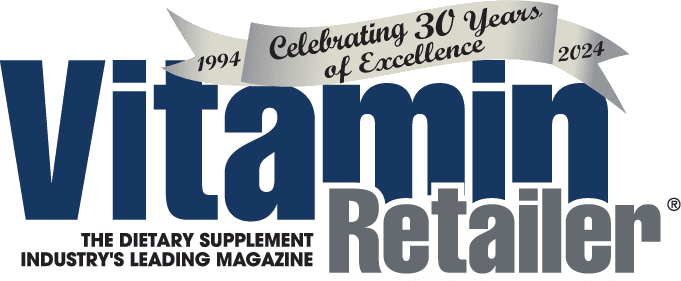Muscle growth and maintenance is an issue of significant concern for young and old alike. For many, the motivation is cosmetic—essentially looking good. Other motivations include improving strength and fitness, as well as maintaining good health. When a decrease in muscle mass occurs with aging, this can certainly have an adverse effect on these goals. While regular resistance exercise1 and proper nutrition are foundational prerequisites to muscle growth and maintenance, there is another strategy that can make a major difference as well: supplementation with phosphatidic acid (PA) to promote mTOR signaling. This article will explain the related research; but first let’s examine the loss of muscle with aging.
Sarcopenia
The age-related loss of skeletal muscle mass and function is called sarcopenia, and is it is recognized as a major clinical problem for the aging population. According to the National Health and Nutrition Examination Survey II, the prevalence of sarcopenia in aging was 35.4 percent in women and 75.5 percent in men—a prevalence that increased with continued aging.2 The fact is that skeletal muscle begins to decline around 45 to 55 years old,3 and continues to decline 12 to 15 percent per decade until 80.4 These are troubling statistics considering that sarcopenia is both common and associated with serious health consequences in terms of frailty, disability, morbidity and mortality.5,6 Furthermore, reduced skeletal muscle has a profound impact on the ability to maintain a minimal level of physical strength, and even just being able to comfortably get around and experience an active quality of life.
Understanding mTOR
So, what can we do to promote muscle growth and maintenance? If you thought about it, your mental list would probably include sufficient exercise (ideally resistance training) and adequate nutrition—which would be correct. You might even include adequate testosterone levels, as well as adequate growth hormone and insulin levels—which would also be correct. But would your list include mTOR?
Mammalian Target of Rapamycin (mTOR) is an enzyme working at the molecular level to help regulate and enhance the capacity for protein synthesis, by mediating the anabolic effect of amino acids and resistance exercise.7 It is part of an anabolic pathway that senses all of the major components needed to sustain growth, including glucose, amino acids and lipids, and insulin. Therefore, it is activated or affected by each of those variables.8 Specifically, increases in energy status,9,10 amino acids,11,12 and growth factors13,14 increase muscle protein synthesis through an mTOR-dependent mechanism. In fact, several studies have also shown that signaling by mTOR is required for mechanically-induced increases in muscle protein synthesis and the ultimate hypertrophic response (i.e. increase in muscle size).15-18
In addition, it is important to consider that the anabolic stimuli-induced mTOR activation is reduced in individuals belonging to older age groups compared to younger adults. Hence, the hypertrophic response by mTOR activation is important for overall muscle maintenance in aged muscle.19 This was seen during a study in which 20 older patients (aged 45 to 83 years), some of whom already had sarcopenia, received mTOR inhibitors. Results were that the use of mTOR inhibitors significantly decreased the skeletal muscle area (P=0.011) and lean body mass (P=0.007).
Understanding PA
Another factor that impacts mTOR is PA. PA is a common phospholipid compound, somewhat similar to phosphatidylserine (PS) and phosphatidylcholine (PC), other phospholipids found naturally in plants and animals, including of course in humans. Chemically, it consists of a glycerol backbone with two fatty acids and a phosphate group.
PA is naturally found in the muscle matrix but in very small amounts. Its cellular role includes functioning as a precursor for the biosynthesis of many other lipids, influencing cell membrane curvature, and acting as a signaling lipid. In fact, during eccentric muscular contractions (see image) or intermittent stretching, the production of PA is increased. PA then binds to mTOR, thereby increasing protein synthesis.20,21
But what happens if PA is ingested as a supplement? This question was examined in three human clinical trials.
PA Study 1
The purpose of this first pilot study22 was to examine if oral PA administration (Mediator PA, Chemi Nutra, Austin, TX) could enhance strength, muscle thickness and lean tissue gain during an eight-week resistance training program. Resistance-trained men were randomly assigned to receive either 750 mg of PA daily or a placebo. Subjects were assessed for strength (one repetition maximum [1-RM] bench press and squat) and body composition during each testing session, and muscle thickness was also measured in the vastus lateralis of the subject’s dominant leg. The results were that subjects ingesting PA demonstrated a 12.7 percent increase in squat strength and a 2.6 percent increase in lean body mass, while subjects consuming the placebo showed a 9.3 percent improvement in squat strength and a 0.1 percent change in lean body mass. In conclusion, this study suggests that ingestion of 750 mg PA daily, combined with a four-day per week resistance training program for eight weeks, appears to have a likely benefit on strength improvement, and a very likely benefit on lean tissue gain in young, resistance trained individuals.
PA Study 2
A second study23 was conducted to compare the ability of various PA precursors and phospholipids to stimulate mTOR signaling and augment resistance training-induced changes in body composition and performance. In phase one of the study, myoblasts (muscle cells) were stimulated with different phospholipids, including PA derived from soy and egg sources to ascertain effects on mTOR signaling. In phase two, resistance trained subjects consumed either 750 mg PA (Mediator PA) daily or placebo, and each took part in an eight-week periodized resistance training program. The results were that, in phase one, soy-PA stimulated mTOR signaling, and the effects of soy-PA (+636 percent) were significantly greater than egg-PA (+221 percent). In phase two, PA significantly increased lean body mass (+2.4 kg), cross sectional area (+1.0 cm), and leg press strength (+51.9 kg) over placebo. In conclusion, PA significantly activated mTOR and significantly improved responses in skeletal muscle hypertrophy, lean body mass, and maximal strength to resistance exercise.
PA Study 3
A third, double-blind, placebo controlled pre/post experimental design study24 was conducted in which PA (Mediator PA) was ingested as the main ingredient in a supplement that also contained other mTOR signaling substances including L-leucine, beta-hydroxy-beta-methylbutyrate and Vitamin D3. Healthy strength-trained males were randomly assigned to a group that either consumed the PA supplement or a placebo, and completed a three-day per week resistance training protocol for the eight-week study duration. Subjects were placed and monitored on an isocaloric diet consisting of 25 protein, 50 carbohydrates, and 25 percent fat by a registered dietitian. The results were that the PA significantly increased lean body mass when compared to the placebo group (p < 0.001). Additionally, PA significantly improved leg press strength (p < 0.001) and bench press strength (p < 0.001) compared to the placebo group (p < 0.001). In conclusion, trial results suggest that, added to a three-day per week resistance training program, the PA supplement positively impacted lean body mass and strength beyond the results found with exercise alone.
Collective Results of PA Studies
In assessing study results, it is often helpful to consider the collective results of all the studies whenever possible. In the case of the PA (Mediator PA) studies, it is possible since many of the same parameters were measured across the studies. Following is a table (data taken from a table in the full-text of PA study 3), which provides the average results of various measurements taken from the three studies. The percentages shown are pre- to post-differences comparing pre- to post-values for Mediator PA to pre- to post-values for placebo outcomes as indicated:
Another way to view the data is to see the results in a bar graph:
Conclusion
The growth and maintenance of lean muscle mass looks impressive, as does the loss in fat mass, which is very important for maintaining good health—especially as we age. Sarcopenia, the age-related loss of skeletal muscle mass and function, should be addressed with regular resistance training and good nutrition. The use of PA (Mediator PA) can activate mTOR signaling, which is important in inducing muscle protein synthesis. In summary, human clinical research has demonstrated that supplementation with PA resulted in improvements in lean body mass, reductions in fat mass, as well as improvements in muscular strength and power. VR
References:
1 Narici MV, Maffulli N. Sarcopenia: characteristics, mechanisms and functional significance. Br Med Bull 2010; 95: 139–59.
2 Batsis JA, Mackenzie TA, Barre LK, Lopez-Jimenez F, Bartels SJ. Sarcopenia, sarcopenic obesity and mortality in older adults: results from the National Health and Nutrition Examination Survey III. Eur J Clin Nutr. 2014 Sep;68(9):1001-7.
3 Webb D. Losing Muscle is a part of aging, but you can minimize the effects. Environmental Nutrition. November 2007;30:11.
4 Kamel H. Sarcopenia and Aging. Nutr Rev. May 2003;61(5): 157-67.
5 Sayer AA. Sarcopenia. BMJ. 2010; 341:c4097.
6 Sayer AA, Robinson SM, Patel HP, Shavlakadze T, Cooper C, Grounds MD. New Horizons in the Pathogenesis, Diagnosis and Management of Sarcopenia. Age Ageing. 2013;42(2):145-150.
7 Adegoke OA, Abdullahi A, Tavajohi-Fini P. mTORC1 and the regulation of skeletal muscle anabolism and mass. Appl Physiol Nutr Metab. 2012 Jun;37(3):395-406.
8 Wang X, Proud CG. (2006). The mTOR pathway in the control of protein synthesis. Physiology. 2006;21(5):362-369.
9 Bolster DR, Crozier SJ, Kimball SR, Jefferson LS: AMP-activated protein kinase suppresses protein synthesis in rat skeletal muscle through down-regulated mammalian target of rapamycin (mTOR) signaling. J Biol Chem 2002, 277:23977-23980.
10 Hardie DG, Hawley SA, Scott JW: AMP-activated protein kinase—development of the energy sensor concept. J Physiol 2006, 574:7-15.
11 Anthony JC, Yoshizawa F, Anthony TG, Vary TC, Jefferson LS, Kimball SR: Leucine stimulates translation initiation in skeletal muscle of postabsorptive rats via a rapamycin-sensitive pathway. J Nutr 2000, 130:2413-2419.
12 Dickinson JM, Fry CS, Drummond MJ, Gundermann DM, Walker DK, Glynn EL, Timmerman KL, Dhanani S, Volpi E, Rasmussen BB: Mammalian target of rapamycin complex 1 activation is required for the stimulation of human skeletal muscle protein synthesis by essential amino acids. J Nutr 2011, 141:856-862.
13 Dardevet D, Sornet C, Vary T, Grizard J: Phosphatidylinositol 3-kinase and p70 s6 kinase participate in the regulation of protein turnover in skeletal muscle by insulin and insulin-like growth factor I. Endocrinology 1996, 137:4087-4094.
14 Frost RA, Lang CH: Differential effects of insulin-like growth factor I (IGF-I) and IGF-binding protein-1 on protein metabolism in human skeletal muscle cells. Endocrinology 1999, 140:3962-3970.
15 Bodine SC, Stitt TN, Gonzalez M, Kline WO, Stover GL, Bauerlein R, Zlotchenko E, Scrimgeour A, Lawrence JC, Glass DJ: Akt/mTOR pathway is a crucial regulator of skeletal muscle hypertrophy and can prevent muscle atrophy in vivo. Nat Cell Bio 2001, 3:1014-1019.
16 Drummond MJ, Fry CS, Glynn EL, Dreyer HC, Dhanani S, Timmerman KL, Volpi E, Rasmussen BB: Rapamycin administration in humans blocks the contraction-induced increase in skeletal muscle protein synthesis. J Physiol 2009, 587:1535-1546.
17 Hornberger T, Stuppard R, Conley K, Fedele M, Fiorotto M, Chin E, Esser K: Mechanical stimuli regulate rapamycin-sensitive signalling by a phosphoinositide 3-kinase-, protein kinase B-and growth factor-independent mechanism. Biochem J 2004, 380:795-804.
18 Kubica N, Bolster DR, Farrell PA, Kimball SR, Jefferson LS: Resistance exercise increases muscle protein synthesis and translation of eukaryotic initiation factor 2Bϵ mRNA in a mammalian target of rapamycin-dependent manner. J Biol Chem 2005, 280:7570-7580.
19 Yoon MS. mTOR as a Key Regulator in Maintaining Skeletal Muscle Mass. Front Physiol. 2017 Oct 17;8:788.
20 O’Neil TK, Duffy LR, Frey JW, Hornberger TA. The role of phosphoinositide 3-kinase and phosphatidic acid in the regulation of mammalian target of rapamycin following eccentric contractions. J Physiol. 2009 Jul 15;587(Pt 14):3691-701.
21 Rasmussen BB. Phosphatidic acid: a novel mechanical mechanism for how resistance exercise activates mTORC1 signalling. J Physiol. 2009;587.14:3415–3416.
22 Hoffman JR, Stout JR, Williams DR, Wells AJ, Fragala MS, Mangine GT, Gonzalez AM, Emerson NS, McCormack WP, Scanlon TC, Purpura M, Jäger R. Efficacy of phosphatidic acid ingestion on lean body mass, muscle thickness and strength gains in resistance-trained men. J Int Soc Sports Nutr. 2012 Oct 5;9(1):47.
23 Joy JM, Gundermann DM, Lowery RP, Jäger R, McCleary SA, Purpura M, Roberts MD, Wilson SM, Hornberger TA, Wilson JM. Phosphatidic acid enhances mTOR signaling and resistance exercise induced hypertrophy. Nutr Metab (Lond). 2014 Jun 16;11:29.
24 Escalante G, Alencar M, Haddock B, Harvey P. The effects of phosphatidic acid supplementation on strength, body composition, muscular endurance, power, agility, and vertical jump in resistance trained men. J Int Soc Sports Nutr. 2016 Jun 2;13:24.
Gene Bruno, MS, MHS, the dean of academics for Huntington College of Health Sciences, is a nutritionist, herbalist, writer and educator. For more than 30 years he has educated and trained natural product retailers and health care professionals, has researched and formulated natural products for dozens of dietary supplement companies, and has written articles on nutrition, herbal medicine, nutraceuticals and integrative health issues for trade, consumer magazines and peer-reviewed publications. He can be reached at gbruno@hchs.edu.








